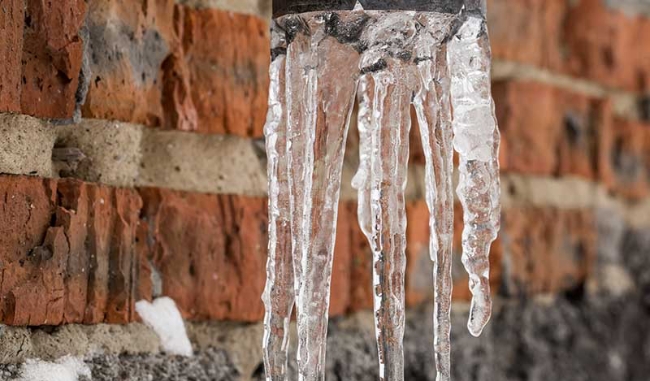Any individual seems to have their personal idea about How to prepare your home plumbing for winter weather.

Winter can damage your pipes, specifically by freezing pipelines. Right here's how to avoid it from occurring and what to do if it does.
Intro
As temperature levels decline, the threat of frozen pipelines rises, potentially bring about costly repair services and water damage. Understanding exactly how to avoid icy pipes is important for home owners in chilly climates.
Prevention Tips
Insulating susceptible pipelines
Wrap pipelines in insulation sleeves or make use of warm tape to secure them from freezing temperature levels. Focus on pipelines in unheated or outside areas of the home.
Home heating techniques
Maintain indoor rooms effectively heated up, specifically locations with plumbing. Open up cupboard doors to enable warm air to flow around pipes under sinks.
How to determine frozen pipes
Look for lowered water flow from taps, uncommon odors or sounds from pipelines, and noticeable frost on exposed pipes.
Long-Term Solutions
Structural changes
Consider rerouting pipes away from outside walls or unheated locations. Include added insulation to attic rooms, basements, and crawl spaces.
Updating insulation
Invest in high-quality insulation for pipelines, attics, and walls. Proper insulation helps maintain regular temperature levels and lowers the danger of frozen pipelines.
Securing Outdoor Pipes
Garden hose pipes and outside taps
Disconnect and drain garden hoses before winter. Set up frost-proof faucets or cover exterior faucets with protected caps.
Comprehending Frozen Pipes
What creates pipelines to ice up?
Pipes freeze when revealed to temperatures listed below 32 ° F (0 ° C) for extended durations. As water inside the pipelines freezes, it broadens, taxing the pipeline walls and potentially creating them to break.
Dangers and damages
Icy pipes can bring about water system disruptions, residential property damages, and expensive repairs. Burst pipes can flooding homes and cause substantial architectural damages.
Indications of Frozen Pipeline
Recognizing icy pipes early can prevent them from bursting.
What to Do If Your Pipes Freeze
Immediate actions to take
If you believe frozen pipes, maintain taps open up to ease stress as the ice melts. Use a hairdryer or towels soaked in warm water to thaw pipes slowly.
Verdict
Stopping icy pipes calls for proactive measures and fast reactions. By comprehending the causes, indications, and preventive measures, property owners can secure their plumbing during cold weather.
6 Proven Ways to Prevent Frozen Pipes and Protect Your Home
Disconnect and Drain Garden Hoses
Before winter arrives, start by disconnecting your garden hoses and draining any remaining water. Close the shut-off valves that supply outdoor hose bibs and leave the outdoor faucet open to allow any residual water to drain. For extra protection, consider using faucet covers throughout the colder months. It’s also important to drain water from any sprinkler supply lines following the manufacturer’s directions.
Insulate Exposed Pipes
Insulating your pipes is an effective way to prevent freezing. Pipe insulation is readily available at home improvement stores and is relatively inexpensive. Pay close attention to pipes in unheated areas such as the attic, basement, crawl spaces, or garage. Apply foam insulation generously to create a buffer against the cold. You can also wrap your pipes in heat tape or thermostat-controlled heat cables for added warmth.
Seal Air Leaks
Inspect your home for any cracks or openings that could let in cold air. Seal any holes around the piping in interior or exterior walls, as well as the sill plates where your home rests on its foundation. Additionally, make sure to keep your garage door closed unless you’re entering or exiting. Leaving it open creates a significant air leak that can lead to frozen pipes.
Allow Warm Air Circulation
During cold snaps, it’s essential to allow warm air to circulate evenly throughout your home. Leave interior doors ajar to promote better airflow. Open kitchen and bathroom cabinets to help distribute heat consistently around the rooms. If you have small children or pets, be sure to remove any household chemicals or potentially harmful cleaners from open cabinets for safety.
Let Faucets Drip
A small trickle of water can make a big difference in preventing ice formation inside your pipes. When temperatures drop significantly, start a drip of water from all faucets served by exposed pipes. This continuous flow helps prevent the water from freezing. Additionally, running a few faucets slightly can relieve pressure inside the pipes, reducing the chances of a rupture if the water inside does freeze.
https://choateshvac.com/6-proven-ways-to-prevent-frozen-pipes-and-protect-your-home/

I'm very taken with Winter Plumbing Precautions: Preventing Frozen Pipes and I am hoping you enjoyed my post. Liked our content? Please quickly share it. Help others discover it. I praise you for being here. Don't hesitate to come by our site back soon.
Need Help? Hire Us Now!